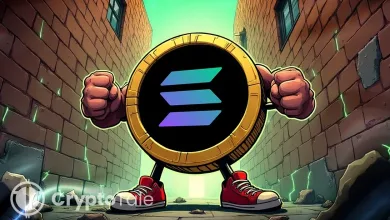Meta Plans Support for USDT and USDC in Platform Payments

- Meta is exploring stablecoin integration to lower costs for platform-based creator payouts.
- The company may adopt a multi-token approach, including USDT and USDC stablecoin support.
- Talks follow Meta’s crypto reentry as U.S. policy warms toward stablecoin innovation.
Taking an innovative step, Meta has proposed to integrate stablecoin payments into its platforms, marking a possible return to digital assets after shelving its earlier Diem project. The company is in discussions with several crypto infrastructure firms but has not finalized a direction, according to sources.
Also, there are speculations that Meta may pursue a multi-token approach. The firm could add support for popular stablecoins like Tether’s USDT and Circle’s USDC. These integrations would likely reduce costs associated with cross-border transactions, including payouts for Instagram creators and other platform users.
Meta’s move comes amid renewed institutional interest in stablecoins. The global stablecoin supply has reached over $241 billion, according to CoinMarketCap data. Meanwhile, the U.S policymakers are paying closer attention to how stablecoins impact the financial system and dollar dominance.
The renewed push toward stablecoin use follows years of stalled progress. Meta’s original crypto initiative, Libra, launched in 2019, was later rebranded as Diem after drawing heavy criticism. The project eventually closed, and its assets were sold to Silvergate Bank, which has since gone bankrupt.
Despite shelving Diem, Meta has not fully exited the crypto space. The company filed trademark applications in 2022 and 2023 for blockchain-based products, including crypto exchanges and digital wallets. It also hired former Ripple executive Ginger Baker to lead new crypto product initiatives.
Related: Mastercard Unlocks Stablecoin Access for Over 150M Locations
Meta joins a wave of tech and finance companies embracing stablecoins. On May 7, Visa disclosed an investment in crypto payments firm BVNK. Stripe also announced stablecoin accounts for users in over 100 countries. These moves show growing confidence in the technology’s ability to lower fees and boost efficiency.
The Trump administration has also endorsed stablecoins. Officials have promoted them as a tool to expand dollar influence and attract foreign investment. Trump-backed World Liberty Financial launched its own stablecoin, USD1, earlier this year. By May, it had become the seventh-largest stablecoin by market cap.
However, regulation remains uncertain. On May 8, Senate Democrats blocked the GENIUS Act, which aimed to create a framework for U.S. stablecoin oversight. Treasury Secretary Scott Bessent called the failed vote a missed opportunity to advance digital dollar policy. Meta has not commented publicly on its stablecoin plans. If pursued, the initiative would place the firm at the center of a rapidly evolving sector that includes finance, technology, and geopolitics.





